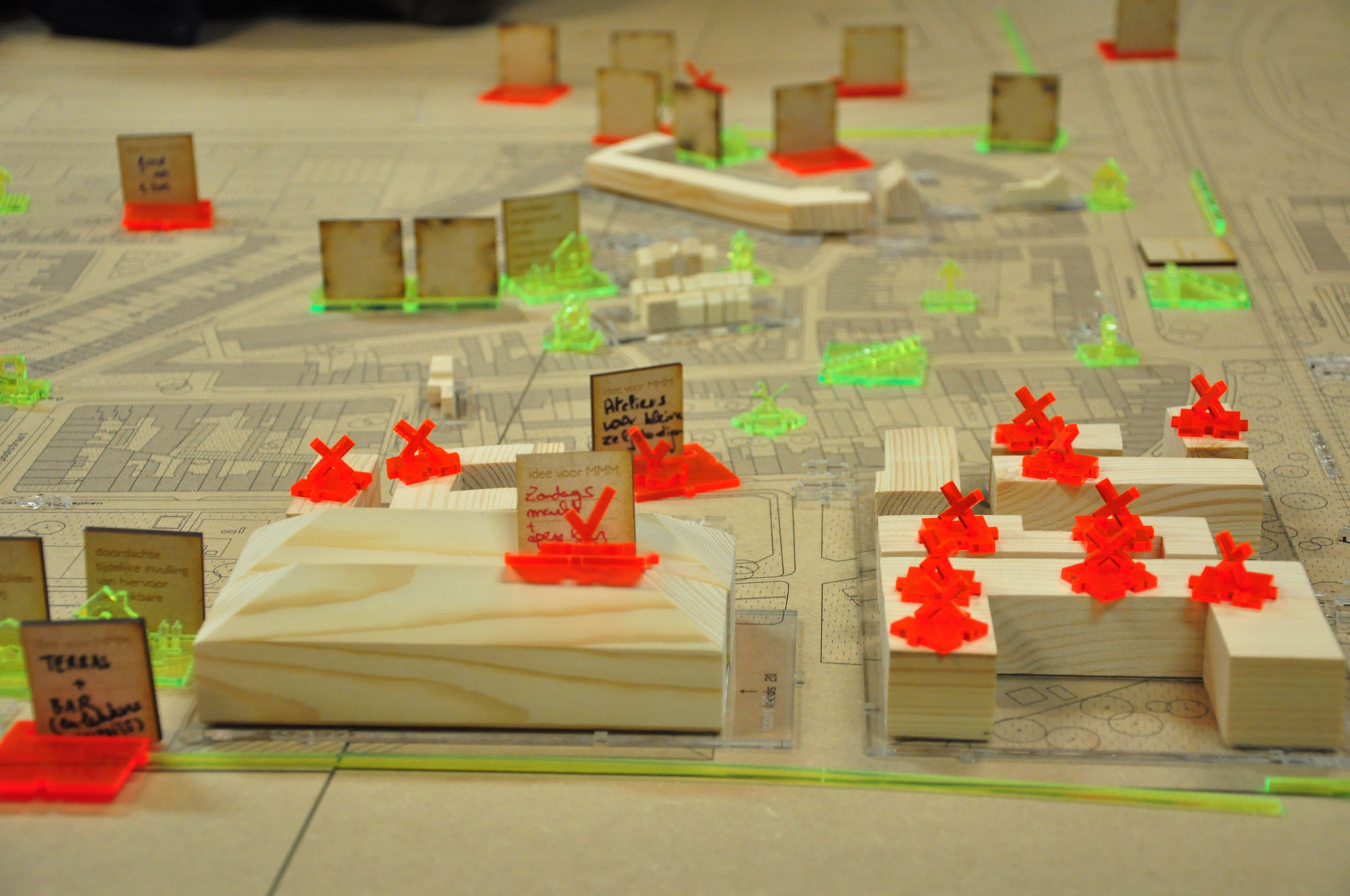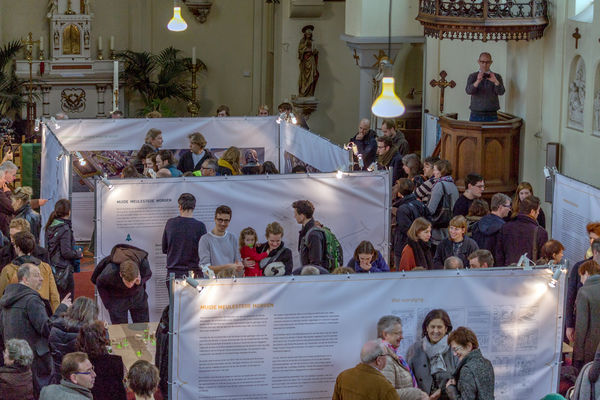Muide-Meulestede is a residential area surrounded by docks and port industry, located on a peninsula in the north of the city of Ghent. The district is in full transition: port activities have expanded to the north, gradually redeveloping the port front and the former industrial sites. There is the urban development project of the 'Oude dokken' and additional housing development that will provide hundreds of extra homes. The social profile of the neighbourhood has also changed considerably in recent decades. The traditional working-class neighbourhood has grown into a mixed neighbourhood where Turkish, Eastern European and young middle-class families live together. At the moment, it has a healthy but precarious balance between very diverse populations living together here.





The city of Ghent has been investing in various forms of urban development in Muide-Meulestede for quite some time - ranging from reconversion projects on temporary social-cultural initiatives, to a pilot project on affordable housing. But instead of all sorts of separate initiatives, the district more than ever needs an overarching, up-to-date, integrated and future vision supported by the neighbourhood. In order to guard against the major mobility interventions and residential projects in the pipeline, a residents' group took the initiative with their own draft study (a thorough exercise that precedes a detailed project). This co-creative approach and public participation did not occur in draft studies before. Study offices Ndvr and Architecture Workroom Brussels supervised the process for the neighbourhood.
With this study, the group of residents and the City of Ghent want to combine existing plans and new ideas in a coherent approach for a lively and sustainable neighbourhood. This draft study connects both local and supra-local, short and long-term interests involving housing, mobility and economic development with a co-creative approach. The thought exercise was supervised by design firms Ndvr and Architecture Workroom Brussels. They organized a series of workshops in which residents, entrepreneurs, social organizations, municipal services and companies are challenged to collectively explore possible future perspectives for Muide-Meulestede. In addition, they organised new coalitions: not only between public and private partners, but also with citizens and civil society initiatives and local entrepreneurs. The project's strength lies in the participation of these diverse groups and in focusing on projects that start from their shared interests.
The neighbourhood has three kinds of assets that can play a role in the neighbourhood: firstly, the social capacity of the neighbourhood (the social networks and the extent to which they can support neighbourhood development), secondly the spatial capacity or the spatial qualities of the neighbourhood, and finally the investment capacity of the neighbourhood: both private and public money.
Ndvr and Architecture Workroom did fieldwork (interviews and observations in the neighbourhood), and on that basis formulated three working hypotheses, which formed the basis for workshops:
1. Productive neighbourhood
Muide-Meulestede is a neighbourhood in the transition between city and port, and thus combines port-related activities with that of accommodation. There are also industrial remnants within the residential area, such as sheds, warehouses, hangars and workshops. Its potential for the manufacturing economy must be retained, utilized and strengthened. In other districts, these kinds of spaces often have had to make room for lofts, and here too, this is already happening to a limited extent. But in Muide-Meulestede there is still the possibility of filling in that space differently, for example by small-scale industry, local entrepreneurship, or as studio space for artists.
2. Sympathetic city
Muide-Meulestede is characterized by a relatively varied housing supply, with lots of affordable housing that isn't of the same quality everywhere. At the top of the neighbourhood there are a lot of landlord-leased dwellings, in which individual owners invest very little. That's why initiatives involving collective renovation are very relevant here. Moreover, the heterogeneity of the current supply must be nurtured by drawing full attention to variation in future developments. The new developments offer opportunities to respond to changing living needs in the neighbourhood. Missing links in the current housing supply were for instance identified in interviews, workshops and work sessions. For example, there are not enough small houses for single people and small families.
3. Connected neighbourhood
Muide-Meulestede has many inner areas where you could basically create informal short cuts, but that's not the case yet. Bicycles are often used, but there isn't really a support structure for vulnerable road users. It is therefore recommended to organize slow roads through the neighbourhood and its (partly) hidden inner zones: a soft road connection for cyclists and pedestrians as an alternative to busy transit roads.
The complete study can be read in three booklets: Agenda describes the broad outlines of the future of the neighbourhood, Program presents concrete projects and shows how they can develop into co-operative urban development through collaboration, and Atelierexplains the concrete form of cooperation between City, neighbourhood and local partners, the organizational structure needed for cooperation between citizens, civil society initiatives, government and the market.
The neighbourhood has parties with ideas and who want to take initiatives, but they lack the financial support. Conversely, there are parties that do have the budget, but they have less insight into the concrete needs, initiatives and ideas. These groups were brought together in district-wide action programs, divided in a number of themes, and eventually in sites, each with a site manager. In 2017, local residents and the City of Ghent launched the structure plan (through the BUUR agency) for Muide-Meulestede. This is intended to become a coherent layout, connecting the various sites in the neighbourhood.






